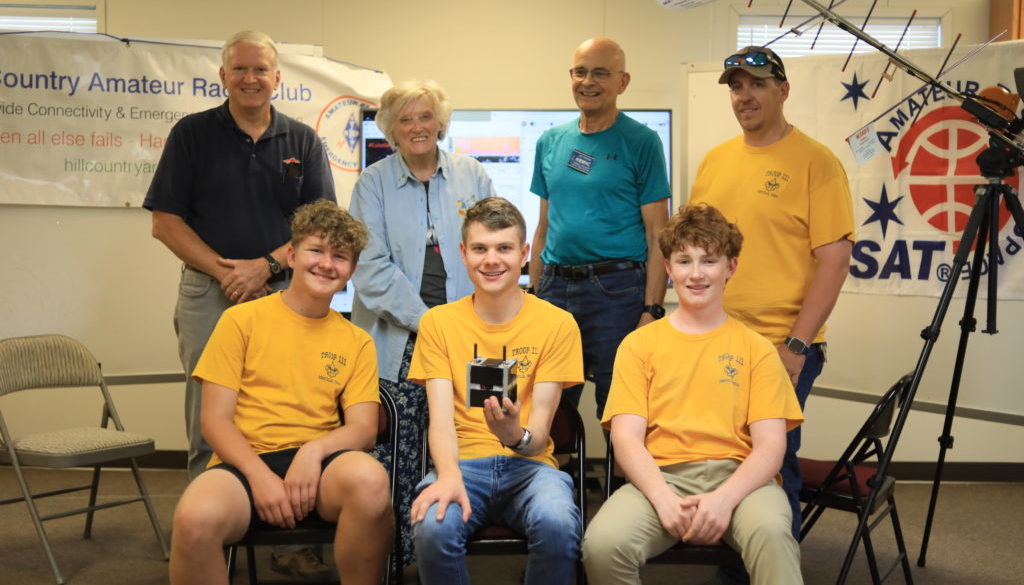Supporting local Boy Scouts interested in STEM, the Hill Country Amateur Radio Club invited members of Troop 111 to take part in building a radio beacon.
The Hill Country Amateur Radio Club is a routine supporter of the scouts when it comes to hands-on STEM projects and education.
“One of our members is an executive in scouting, so when we do something that’s STEM oriented, we invite them. If they can find two or three scouts who are interested, then we support them and we present projects to them at their meetings,” said Hank Ortega, a local HAM operator and member of the HCARC.
In order to give a comprehensive lesson on HAM radio operation, the club tasked the four willing scouts with building a radio beacon to exemplify how radio waves are transmitted and received.
“The scouts received the kit from Mrs. Tynan, who’s the widow of Bill Tynan, a pioneer in satellite and microwave communication and who gave this radio club his call sign,” said Ortega.
Bill Tynan’s passion for radio gave the HCARC its identifying call sign W3XO. Even after his passing, Tynan’s passion continues to support the club through his wife’s sponsorship.
“I do it for him! He would absolutely support these boys, especially since he was one of the founders of the satellite group AMSAT,” said Tynan’s wife, Mattie Tynan.
Once completed, the radio beacon kit Mrs. Tynan donated to the scouts’ project allows them to communicate with passing satellites.
“The kit that was assembled is completely identical to any radio beacon that is sent into space. The only difference is the skin itself, it is not a space-proof skin. But every other part of this kit has the kind of range that can be received from near space all the way out to deep space. It’s pretty remarkable,” said Ortega.
The beacon, despite being earth-bound, sends a radio signal on a certain frequency that can ping radios when the antenna is tuned towards them.
“If you know the frequency and know when the satellite is passing, you can do some computations in order to aim the antenna and you can follow the satellite and receive that beacon signal,” said Ortega.
Especially interested in the calculation aspect of amateur radio, was Scout Raleigh Priour, a senior at Tivy High School. Priour along with a few other local scouts, took part in the multi-step project that spanned over a few weeks.
“I think HAM radio is really cool, with Fourier transformers and all the different math that goes into producing and receiving the signals,” said Priour.
After assembling the beacon, the scouts then used the HCARC’s antenna to tune into their beacon’s frequency and ping their radios. The project will continue with the creation of a radio repeater, where the signals transmitted will also be reflected back – or “repeated.”
“The Hill Country Amateur Radio Club will assemble one that’s actually a repeater which we can use in remote locations to hit our repeater here at the club station. With this repeater-type station, when you send a signal to it, it’ll bounce off and get resent by that satellite to another station,” said Ortega.
For more information about the Hill Country Amateur Radio Club and their projects for amateur operators, visit their website at: www.hillcountryarc.org.
